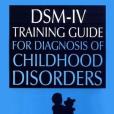《DSM-IV Training Guide for Diagnosis of Childhood Disorders》是Routledge出版的圖書,作者是Rapoport, Judith L., Ismond, Deborah R.
基本介紹
- ISBN:9780876307663
- 作者:Rapoport, Judith L.、 Ismond, Deborah R.
- 出版社:Routledge
- 出版時間:1996年2月
- 頁數:384
- 定價:$ 54.18
- 裝幀:Pap
內容簡介
Revised to reflect changes made in DSM-IV as they pertain to childhood psychiatric disorders, this updated DSM-IV Training Guide for Diagnosis of Childhood Disorders provides specific instructions for optimally using the DSM-IV. This meticulously researched companion guide will provide welcome clarification and definition of the terms and concepts included in the DSM-IV criteri...(展開全部) Revised to reflect changes made in DSM-IV as they pertain to childhood psychiatric disorders, this updated DSM-IV Training Guide for Diagnosis of Childhood Disorders provides specific instructions for optimally using the DSM-IV. This meticulously researched companion guide will provide welcome clarification and definition of the terms and concepts included in the DSM-IV criteria for disorders pertaining specifically to children and adolescents. The volume encompasses both psychopathology specific to infancy, childhood, and adolescence and other psychiatric disorders, such as Anxiety, Obsessive-Compulsive Disorder, Depression, and Schizophrenia, that are more common as adult disorders by may appear in childhood. While the diagnostic criteria for these are largely the same for children and adults, there are differences that emerge when making differential diagnosis of these disorders for children, as illuminated in the Training Guide. This companion guide focuses on the manifestation of various disorders, differentiation among syndromes, and qualify of characteristics. Numerous and vivid case vignettes clearly illustrate clinical symptoms and demonstrate the application of diagnostic guidelines. The book highlights the multiaxial approach of DSM as a means of assessing the child from a variety of perspectives including exogenous factors influencing development, sources of a particular disorder, and the child's innate limitations and capabilities. Diagnostic criteria and main features of specific disorders are highlighted in numerous tables and figures interspersed th

